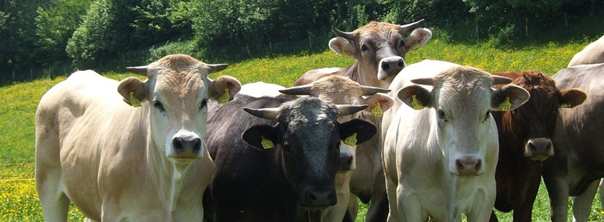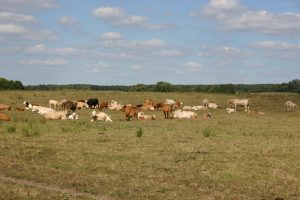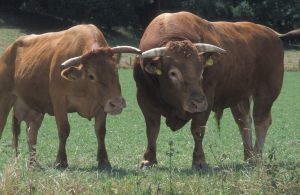
In the cow stall (Brodowin): Learning by example and talking to practitioners.

In the classroom (HNEE): Lectures on horned cows and husbandry systems
After being welcomed by event organisers Prof. Dr. Bernhard Hörning began to discuss the issue by introducing the legal aspects of horns and dehorning from the point of view of organic farming and animal welfare. He explained the pros and cons of dehorning and described the different dehorning methods. The participants then took a look back at the die history of horned cattle. together with Ulrich Mück, Demeter consultant and coordinator of the research project. The interesting journey into the past showed the evolution of horn-bearing cattle from revered and respected farm animals to seemingly horned “beasts”.
After all the informative theory, the warm lunch was just as welcome as the change of scene to the stable in Brodowin afterwards to experience the dairy herd described by Peter Krentz first-hand in action. To demonstrate the hierarchy and the associated behaviour among the animals, the cows were faced with an unusual challenge: only half of the feed stations were filled with feed. Which cows would be most likely to come out on top and, more importantly, by what means?
The onlookers watched the cows with excitement, but Ulrich Mück was almost disappointed as he praised the good social behaviour and the measured reaction of the cows to the scarce resources. The black Holstein-Friesian (HF) from Peter Krentz made a tiptop impression in spite of their reputation (according to Uli Mück the HF in Bavaria are generally thought of as devious). Walking through the resting area, milking parlour and pre-milking area, Mr. Krentz concluded by talking about the main difficulties and success stories of his dairy farm.



